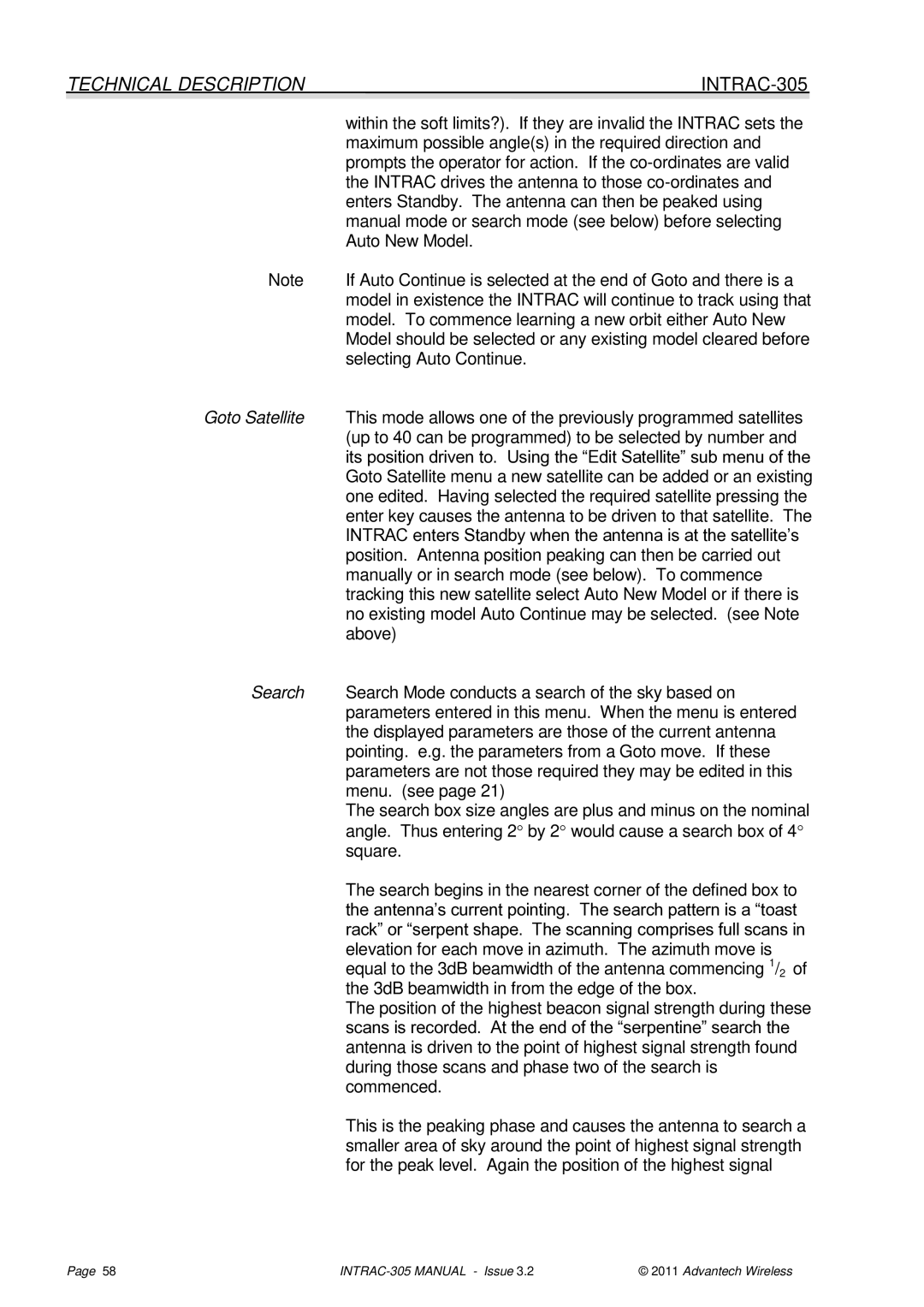TECHNICAL DESCRIPTION |
|
| within the soft limits?). If they are invalid the INTRAC sets the |
| maximum possible angle(s) in the required direction and |
| prompts the operator for action. If the |
| the INTRAC drives the antenna to those |
| enters Standby. The antenna can then be peaked using |
| manual mode or search mode (see below) before selecting |
| Auto New Model. |
Note | If Auto Continue is selected at the end of Goto and there is a |
| model in existence the INTRAC will continue to track using that |
| model. To commence learning a new orbit either Auto New |
| Model should be selected or any existing model cleared before |
| selecting Auto Continue. |
Goto Satellite | This mode allows one of the previously programmed satellites |
| (up to 40 can be programmed) to be selected by number and |
| its position driven to. Using the “Edit Satellite” sub menu of the |
| Goto Satellite menu a new satellite can be added or an existing |
| one edited. Having selected the required satellite pressing the |
| enter key causes the antenna to be driven to that satellite. The |
| INTRAC enters Standby when the antenna is at the satellite’s |
| position. Antenna position peaking can then be carried out |
| manually or in search mode (see below). To commence |
| tracking this new satellite select Auto New Model or if there is |
| no existing model Auto Continue may be selected. (see Note |
| above) |
Search | Search Mode conducts a search of the sky based on |
| parameters entered in this menu. When the menu is entered |
| the displayed parameters are those of the current antenna |
| pointing. e.g. the parameters from a Goto move. If these |
| parameters are not those required they may be edited in this |
| menu. (see page 21) |
| The search box size angles are plus and minus on the nominal |
| angle. Thus entering 2° by 2° would cause a search box of 4° |
| square. |
| The search begins in the nearest corner of the defined box to |
| the antenna’s current pointing. The search pattern is a “toast |
| rack” or “serpent shape. The scanning comprises full scans in |
| elevation for each move in azimuth. The azimuth move is |
| equal to the 3dB beamwidth of the antenna commencing 1/2 of |
| the 3dB beamwidth in from the edge of the box. |
| The position of the highest beacon signal strength during these |
| scans is recorded. At the end of the “serpentine” search the |
| antenna is driven to the point of highest signal strength found |
| during those scans and phase two of the search is |
| commenced. |
| This is the peaking phase and causes the antenna to search a |
| smaller area of sky around the point of highest signal strength |
| for the peak level. Again the position of the highest signal |
Page 58 | © 2011 Advantech Wireless |
